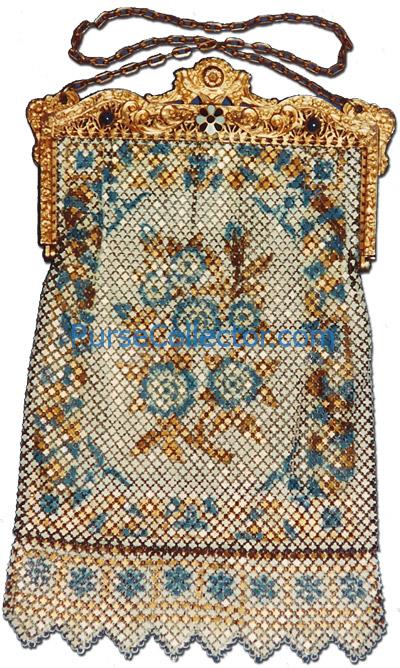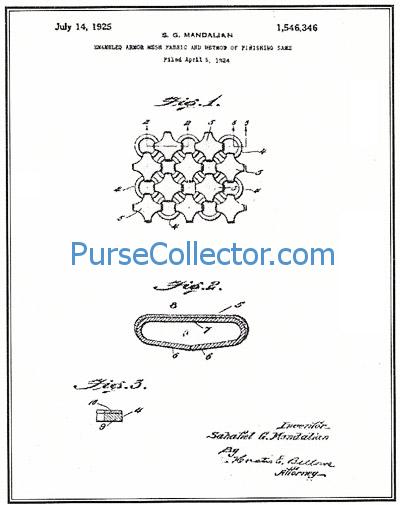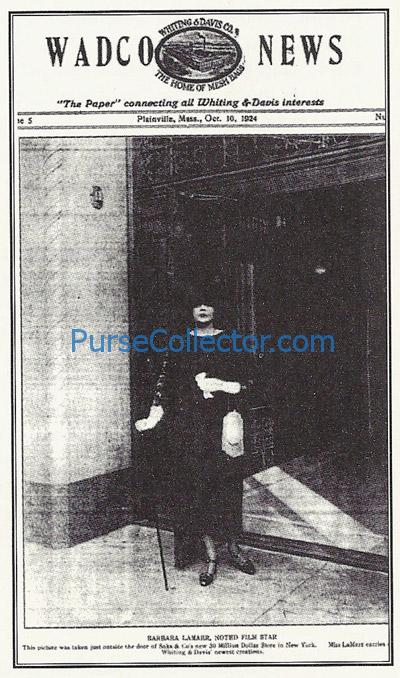Image 1003 – Mandalian standard flat mesh purse with a floral design and two cabochon glass stones and an enameled decoration on the frame, 5 x 7 ¾.
Mandalian mesh bags present their own set of mysteries. In fact, less information of any kind is available about Mandalian Mfg. and its owner, Sahatiel Mandalian. Although similar in many ways to Whiting & Davis bags, Mandalian mesh purses have an appeal all their own. In some ways the workmanship on Mandalian bags is superior to that of competitors. The metal used for making the Mandalian spiders is thicker, causing the legs to be less likely to come loose from the connecting rings. On some of the better bags the links under the hinges were even soldered together after the bag was assembled to prevent them from pulling apart, a common problem with less well made bags. From an aesthetic viewpoint, Mandalian painted designs are more Victorian looking with an emphasis on pattern florals. In some cases traditional Turkish rug designs reflect Mr. Mandalian’s heritage. Sahatiel Mandalian was granted two patents concerning flat mesh fabric and painting flat mesh. The patent applications were filed April 5, 1924, and June 24, 1924. His company was also recognized in publications of the era as originators of machine-made flat mesh. A patent assigned to Mandalian was filed in November 1912 for a flat mesh machine, some five months before the Whiting & Davis flat mesh machine patent was filed. Whether you favor Mandalian or Whiting & Davis bags, the fact remains that the Mandalian Mfg. Co. played an important role in the development of the mesh bag industry.




